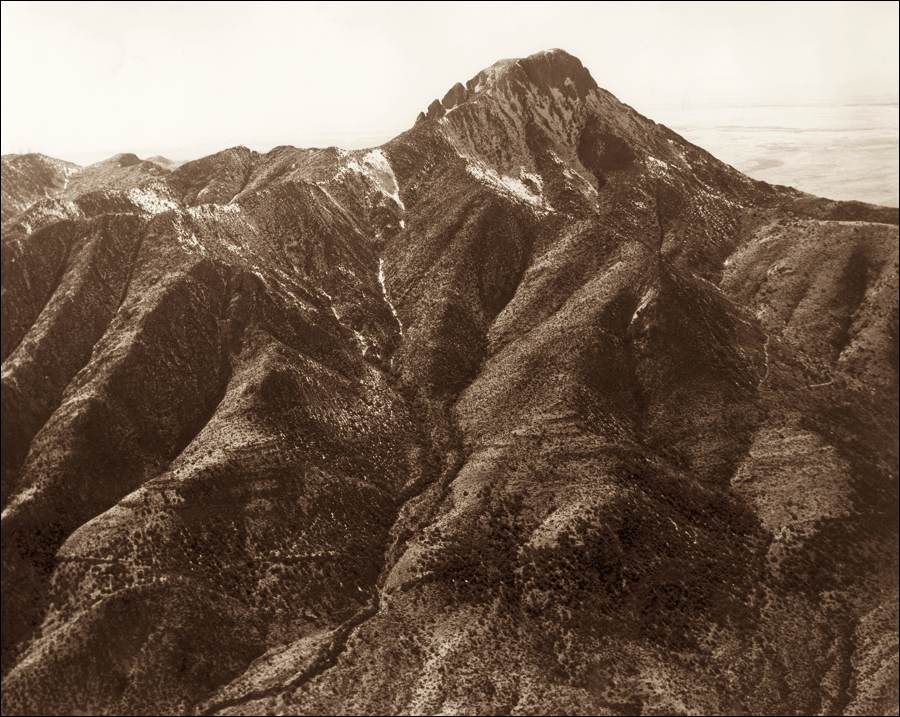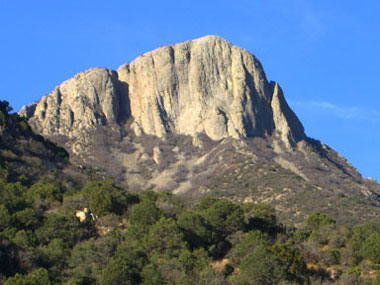Climbing Cooke’s Peak — Part 3
The ascent
Cooke’s Peak has no nicely marked trails, and thus no trail guides. We had no detailed maps. All we had before us was a looming pile of granodiorite (a volcanic rock similar to but darker than granite), a wilderness of rocky canyons and scree slopes. Unless we were willing to turn tail for home (which we were not), our only choice was to start hiking up. And up. And up.

— Bob Ingraham Photo
Thin air, rising temperature, loose rock, steep pitches
We started off at a brisk pace up the first gentle slopes of the mountain. The morning was still cool, and the first several minutes of the adventure were easy and pleasant. But gravity, thinning air, rising temperature, loose rock, and some very steep pitches soon began to take their toll.
The canyons were the easiest to walk, but eventually each one would come to an end, and we would have to clamber up a steep incline to top out on one more ridge, which inevitably ended in one more rocky canyon. The surface of Cooke’s Peak is composed largely of jagged chunks of loose rock, most of which seemed to slip beneath our feet. Sometimes it was a matter of one step upward and forward and two steps downward and backward. We soon found ourselves stopping frequently to rest and drink from our small supply of water. Sweat began to run into our eyes, and shirts came off. The longer we toiled on, the steeper the mountain became, of course. This was indeed Cooke’s Peak, emphasis on Peak.

I remember clearly one rest stop deep in the shade of a small canyon. To this day I clearly recall the cool, damp smell of the rock face that loomed over us. After a brief rest, we had to scramble up yet another steep slope strewn with loose stone. It was exhausting work.
Eventually, the summit came into view. Or, more correctly, we moved to a point where we could finally see the summit. But from that point, the peak of the mountain was clearly visible, and all we had to do was traverse a long series of ridges to gain the top. But it was getting so steep that we often had to grab the branches of small trees to gain a footing, and our progress slowed even more.

As we labored upward, only two- or three-hundred feet from the summit, we were visited by an almost unbelievable apparition: a U.S. Air Force B-47 jet bomber suddenly burst into view above the peak. There was no warning at all, no distant roar growing louder, nothing but blue sky and rock pinnacle looming ahead one moment, and a fraction of a second later this huge airplane filling it.
The B-47 cleared the peak by no more than a few hundred feet at most — clearly, the pilot was hot-dogging it! It was graceful, loud, and then gone, vanishing into the eastern sky, leaving behind a diminishing cascade of thunder.

I remember little about the last hour of our climb. It's not that it was particularly arduous, nor that I was in the last stages of terminal fatigue. I've just forgotten. It was, after all, the better part of half a century ago! But I do remember one exciting spot near the top: we had to transit a narrow ridge on all fours (at least I used all fours!): on each side, long chutes, scoured clean by falling rocks, dropped away from the mountain. That was the "scariest" moment, and then we were on top.